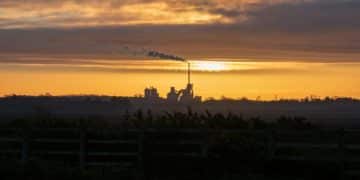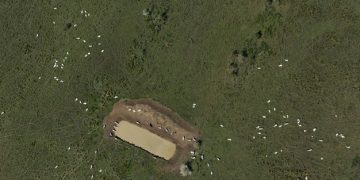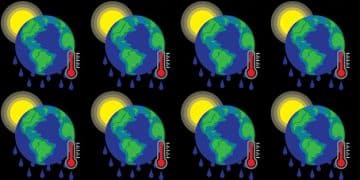Arctic Tensions: Impact on US National Security
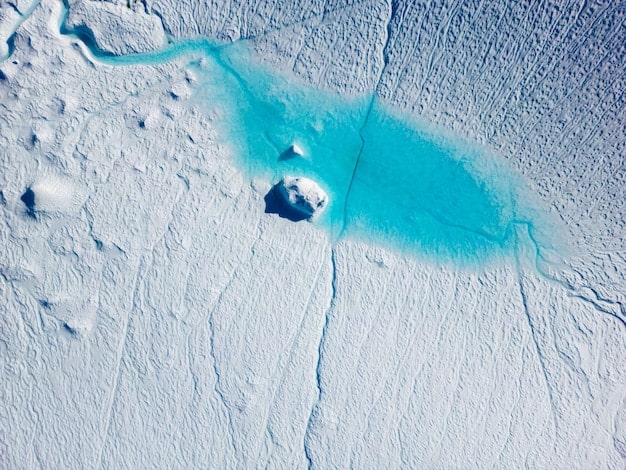
Increasing Arctic tensions, driven by climate change and geopolitical competition, pose significant challenges to US national security, impacting resource access, maritime routes, and military readiness.
The Arctic region is undergoing rapid transformation due to climate change, leading to increased geopolitical competition and raising critical questions about how will the increasing Arctic tensions impact US national security. As ice melts and access to resources and strategic waterways becomes easier, the US faces new challenges and opportunities in this increasingly important region.
Understanding the Arctic’s Strategic Importance
The Arctic’s strategic importance to the US lies in its geographic location, natural resources, and potential as a new frontier for maritime transportation. Understanding these aspects is crucial to grasping the implications of rising tensions.
Geographic Significance
The Arctic’s proximity to both the US and Russia makes it a critical region for defense and security. Changes in the Arctic could impact early warning systems, missile defense, and overall strategic posture.
Resource Potential
The Arctic is estimated to hold vast reserves of oil, gas, and minerals. As these resources become more accessible, competition for their control intensifies, increasing the potential for conflict.

The Arctic region’s thawing ice is creating new opportunities and challenges. Here’s a brief look:
- The opening of new shipping lanes reduces transit times between continents.
- Increased access to natural resources fuels economic and geopolitical rivalry.
- Thawing permafrost releases methane, accelerating climate change.
- Indigenous communities face profound cultural and environmental changes.
In conclusion, the Arctic’s geographic significance and resource potential make it a vital region for US national security. The increasing accessibility and subsequent competition amplify the complexities and potential risks.
The Role of Climate Change in Arctic Tensions
Climate change is the primary driver of the changes occurring in the Arctic, fundamentally altering the region’s landscape and contributing to escalating tensions.
Melting Ice and New Opportunities
The rapid melting of ice in the Arctic is opening up new maritime routes and exposing natural resources that were previously inaccessible. This creates opportunities for economic development but also increases the risk of exploitation and environmental damage.
Environmental Impacts
The environmental impacts of climate change in the Arctic extend beyond melting ice. Thawing permafrost releases methane, a potent greenhouse gas, further accelerating global warming.
Climate change is altering the Arctic. Here’s how:
- Reduced sea ice increases navigation opportunities and resource exploration.
- Thawing permafrost threatens infrastructure and releases greenhouse gasses.
- Changes in wildlife migration patterns impact traditional hunting practices.
- Coastal erosion endangers Arctic communities and ecosystems.
In summary, climate change is a catalyst for Arctic tensions, creating new opportunities and exacerbating environmental risks. Understanding these impacts is crucial for the US to develop effective strategies for the region.
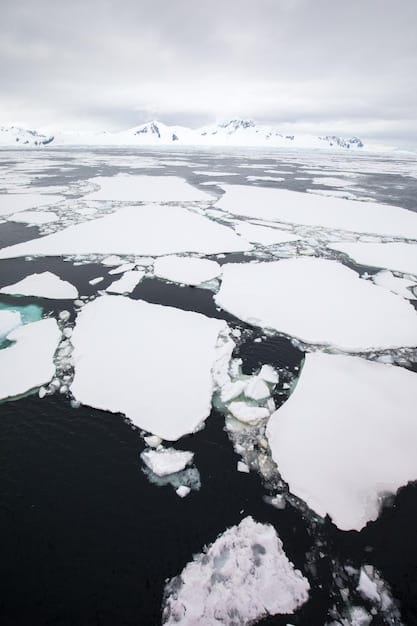
Geopolitical Competition in the Arctic
Geopolitical competition in the Arctic is intensifying as various nations assert their interests in the region, driven by strategic and economic considerations.
Russia’s Arctic Ambitions
Russia has been actively strengthening its military presence in the Arctic, modernizing its Northern Fleet, and reopening Soviet-era bases. These actions are aimed at securing its northern borders and asserting its dominance in the region.
China’s Expanding Role
China, while not an Arctic nation, has been increasing its involvement in the region through investments in infrastructure projects and scientific research. China’s interest in the Arctic is primarily driven by its desire for access to resources and new shipping routes.
The United States’ Response
The US is responding to the growing geopolitical competition in the Arctic by enhancing its own military capabilities, conducting joint exercises with allies, and reaffirming its commitment to international law and cooperation.
Several countries are competing for influence in the Arctic:
- Russia is expanding its military presence and infrastructure in the Arctic.
- China is investing heavily in Arctic resource extraction and shipping.
- The US is enhancing its military capabilities and diplomatic engagement.
- Canada is asserting its sovereignty and protecting its Arctic communities.
Geopolitical competition in the Arctic is escalating due to Russia’s strategic ambitions, China’s growing interests, and the US’s efforts to maintain its influence. This competition requires a comprehensive approach that balances security, diplomacy, and cooperation.
Impact on US Military and Defense Strategies
The increasing Arctic tensions have significant implications for US military and defense strategies, requiring adaptations to address new challenges and threats.
Strengthening Arctic Capabilities
The US military needs to enhance its capabilities to operate effectively in the Arctic environment, including investing in specialized equipment, training, and infrastructure. This includes improving maritime domain awareness and developing cold-weather operational expertise.
Joint Exercises and Alliances
The US can strengthen its Arctic defense by conducting joint exercises with allies, such as Canada, Denmark, and Norway. These exercises improve interoperability and demonstrate a united front against potential adversaries.
Here’s how Arctic tensions are reshaping US military strategies:
- Increased investment in Arctic-capable military equipment and infrastructure.
- More frequent joint military exercises with allies in the region.
- Strengthened maritime domain awareness through advanced surveillance technologies.
- Enhanced training for cold-weather operations and Arctic-specific threats.
In conclusion, the increasing Arctic tensions demand a reassessment and strengthening of US military and defense strategies. By enhancing Arctic capabilities, fostering alliances, and improving strategic deterrence, the US can effectively safeguard its interests in the region.
Economic and Resource Implications for the US
The economic and resource implications of the increasing Arctic tensions are substantial for the US, particularly regarding access to natural resources and new trade routes.
Access to Natural Resources
The Arctic is estimated to hold significant reserves of oil, gas, and minerals. Access to these resources could boost the US economy and reduce its dependence on foreign energy sources. However, responsible and sustainable development practices are essential to minimize environmental damage.
New Trade Routes
The opening of new maritime routes in the Arctic, such as the Northwest Passage and the Northern Sea Route, could significantly reduce shipping times between Asia and Europe. This could create new opportunities for US businesses and enhance global trade efficiency.
Infrastructure Development
Developing the infrastructure necessary to support economic activities in the Arctic, such as ports, pipelines, and communication networks, will require significant investments. These investments could stimulate economic growth and create jobs in the US.
The economic and resource impacts of Arctic tensions on the US include:
- Potential access to vast reserves of oil, gas, and minerals.
- Opportunities to utilize new, shorter trade routes between continents.
- Need for significant investment in Arctic infrastructure development.
- Increased competition for resources with other nations.
In summary, the increasing Arctic tensions present both economic opportunities and challenges for the US. By pursuing responsible resource development, investing in infrastructure, and fostering international cooperation, the US can maximize the economic benefits of the Arctic while mitigating potential risks.
Diplomatic and Policy Responses
Effective diplomatic and policy responses are essential for managing the increasing Arctic tensions and promoting stability in the region.
International Cooperation
The US should prioritize international cooperation through forums such as the Arctic Council to address shared challenges and promote sustainable development. This includes working with other Arctic nations to establish clear rules and norms for behavior in the region.
Strengthening Alliances
The US should strengthen its alliances with key Arctic nations, such as Canada, Denmark, and Norway, to enhance collective security and promote common interests. This includes coordinating defense strategies and conducting joint exercises.
Developing a Comprehensive Arctic Strategy
The US needs to develop a comprehensive Arctic strategy that integrates economic, security, and environmental considerations. This strategy should outline clear goals and priorities for US engagement in the region.
Here’s how diplomatic and policy responses can address Arctic tensions:
- Promoting international cooperation through forums like the Arctic Council.
- Strengthening alliances with key Arctic nations.
- Developing a comprehensive Arctic strategy that integrates various considerations.
- Establishing clear rules and norms for behavior in the region.
In conclusion, effective diplomatic and policy responses are crucial for managing Arctic tensions and ensuring stability. By promoting international cooperation, strengthening alliances, and developing a comprehensive strategy, the US can effectively navigate the challenges and opportunities in the Arctic.
| Key Point | Brief Description |
|---|---|
| 🧊 Melting Ice | Opens new routes and resources but causes environmental concerns. |
| 🇷🇺 Russia’s Role | Military expansion impacts regional stability. |
| 💰 Economic Impact | New resources and trade routes provide economic opportunities. |
| 🤝 Cooperation | International collaboration is vital for stability and sustainability. |
Frequently Asked Questions
▼
The Arctic is gaining importance due to climate change, which is melting ice and making new resources and shipping routes accessible. This has led to increased geopolitical and economic interest in the region.
▼
The main threats include Russia’s military expansion, increased competition for resources, and the environmental impacts of climate change. These factors could destabilize the region and threaten US interests.
▼
The US military is enhancing its Arctic capabilities by investing in specialized equipment, conducting joint exercises with allies, and strengthening maritime domain awareness in the region.
▼
The Arctic offers potential access to vast reserves of oil, gas, and minerals, as well as new, shorter trade routes between continents. These opportunities could boost the US economy and enhance global trade.
▼
International cooperation through forums like the Arctic Council is crucial for managing Arctic tensions, promoting sustainable development, and establishing clear rules and norms for behavior in the region.
Conclusion
In conclusion, the increasing Arctic tensions present a multifaceted challenge to US national security, encompassing economic, military, and diplomatic dimensions. A comprehensive and adaptive strategy is essential for navigating these complexities and safeguarding US interests in this rapidly evolving region.
